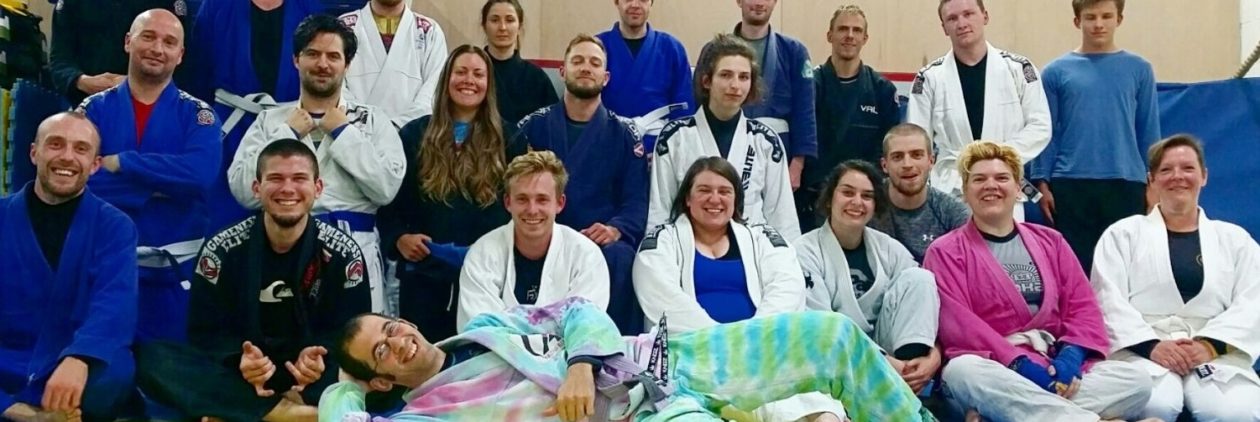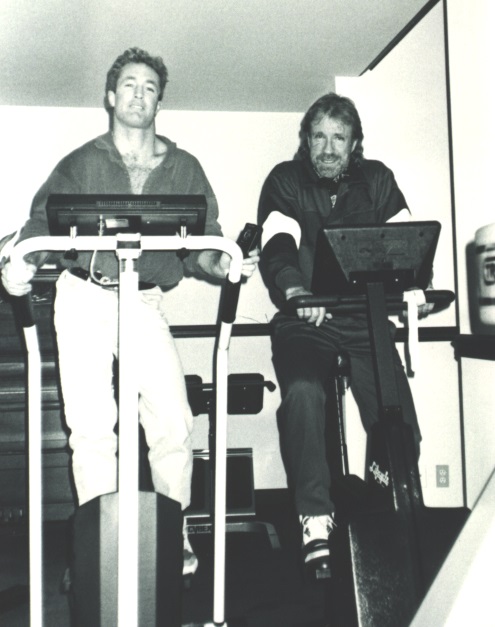Following on from last week, the John Will interview series continues with his memories of introducing Chuck Norris to the sport. He also talks about going straight from white to purple belt, leading into his thoughts on promotion. Sections of this interview appeared in Issue #010 of Jiu Jitsu Style and are reprinted with the kind permission of the editor.
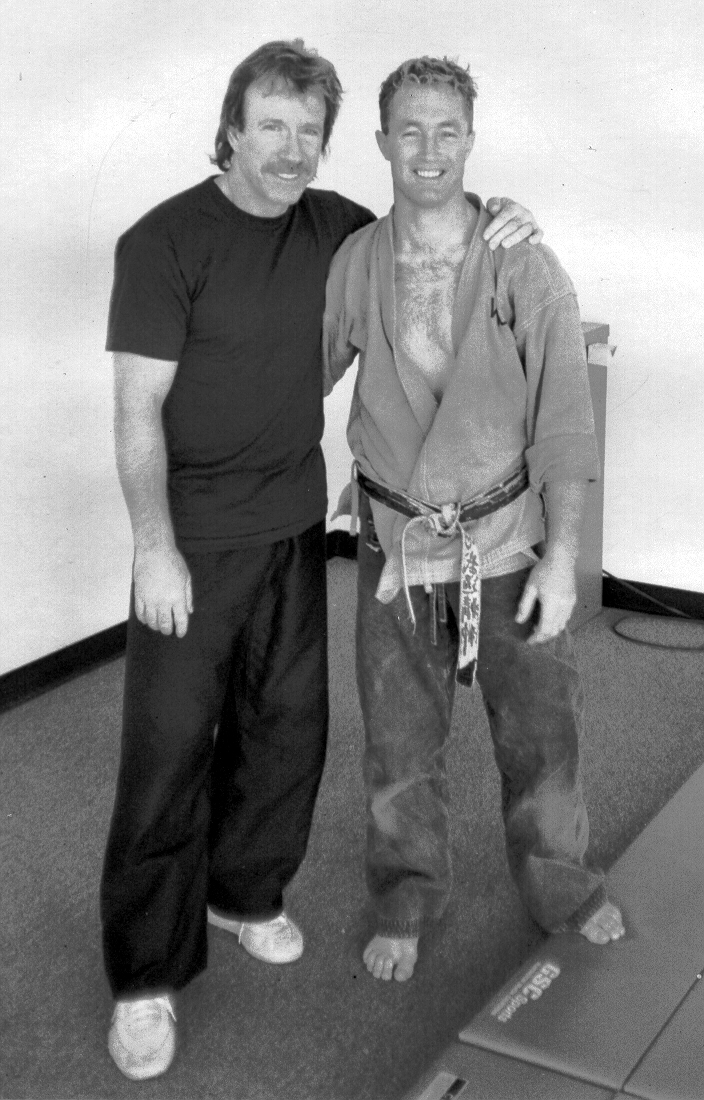
ARTEMIS BJJ: Moving on slightly, I have read several different versions of how Chuck Norris became involved with BJJ and more specifically the Machados. Black Belt Magazine states Carlos Machado met Chuck Norris while on vacation in Las Vegas during 1988, during his UFAF convention.
The Los Angeles Times claims Rigan met Norris in 1989, while scuba diving. In yet another magazine, it instead points to your old friend Richard Norton. So, what’s you recollection of what actually happened?
JOHN WILL: My goodness, I’d hate to give you a fourth version! [laughs] Also, please understand, this is going back a while, so it is all a bit blurry. Ok, I don’t know if this is politically correct to say, but I’ll tell you what happened and you can decide whether to use it or not, because it may ruffle some feathers.
I’m not certain how he first saw jiu jitsu, but recalling what Chuck said to me, I think he was in Brazil for some reason, with Bob Wall. I think they were down there, perhaps scuba diving, or something like that. They heard about this family and they went along to one of the academies. Bob Wall being Bob Wall said “I’d side kick you,” or something ridiculous, he’s always been like that.
Either way, Chuck was impressed. If I’m not mistaken, it might have been Rickson who was out there. I’m sure they were treated very well, as it was Chuck (Bob is a bit combative whereas Chuck is super-nice), so I think that was Chuck’s first impression, how he connected with it. I’m pretty certain that’s right.
Then what happened is he went back home and he wanted to do more, follow up. I think he knew about Rorion being in Torrance, I think through the Jet Centre, because I believe they knew because Gene LeBell knew, and he’s a friend of Chuck’s. Then, Chuck had his annual UFAF convention in Las Vegas, where he invited Rorion along, as a guest. When you’re invited there, it’s always as a guest, nobody is getting paid fees or anything.
Rorion came along to teach, but then gave Chuck a bill at the end of it. Now, I’ve heard, though I certainly don’t know if it’s true, that this bill was $15,000. That made Chuck go, “Oh my god. That’s not what we’re doing here.” Now, even if it’s true, I’m not saying Rorion is wrong, because he is certainly entitled to get paid for what he does, but I don’t think that’s what Chuck thought, so there was obviously some miscommunication.
The end result of it was Chuck saying, “Well, here’s your money,” but he decided he wouldn’t have anything more to do with those guys.
ARTEMIS BJJ: So it wasn’t that he couldn’t afford it, but that he didn’t want to have that kind of arrangement?
JOHN WILL: I think it just started out wrong. You know how these things go, it could just as easily have started out right. A lot of things, I’m now old enough to know, it’s just miscommunication. People come in not understanding clearly what was going on, because that’s what happens in life.
So, that’s probably unfortunate, that’s what happened. Chuck kind of went cold on the whole idea. Then I came along, so I think it might have been me that met him, and I said to him, “Hey Chuck, look, one of the Machados is right here in town. They’re really good people, they’re not…I’m not saying Rorion is all about the money, but they’re not all about the money. They’re about jiu jitsu and promoting it, you’re going to love it.”
Richard Norton’s account of how Chuck came to connect up with the Machados would without doubt be more accurate and complete than mine: it should be noted that I only have a vague recollection. All I remember is pretty much one conversation I had with Chuck at the Jet Centre, where I espoused on how great the Machado brothers were and that he should train with them. Richard, no doubt, had pre-empted me on this. He played the pivotal role in introducing Chuck to the Machados and should be recognised for such.
So, Chuck came along and he met the Machados, Rigan, if I’m not mistaken. Then Chuck said “Oh wow, this is different,” because their response was, “We don’t want your money: you’re Chuck Norris! Could you give us an autograph? We’ll teach you for free!” [laughs]
That’s when he got into it, and then he became so into it that he was instrumental in bringing all of them up, getting their green cards and getting Carlos Machado established in Texas, where he lived. I think that’s fairly accurate.
ARTEMIS BJJ: Yeah, that seems to mesh with the various stories I’ve read. So, that would have been about 1990?
JOHN WILL: It was before the UFC, so I reckon you’re about right. It was probably around 1990, pre-UFC. Yeah.
ARTEMIS BJJ: You mention in your book that you went straight from white belt to purple. I assume that was as unusual then as it is now: if so, did you realise your comparatively unique status at the time?
JOHN WILL: The first thing I’d like to say is that I have no natural talent. I think that situation was a function of me living in Australia and travelling over for training, spending time there then coming back, that kind of stuff. So, it was me going away, and I probably passed blue belt level, meaning I should have been graded to blue but I just wasn’t there.
So, at some point when I was training down in Redondo Beach, my first grading was purple. How are you getting this information? Not many people know that. [laughs]
ARTEMIS BJJ: It’s all in your books. [laughs]
JOHN WILL: So, I went straight to purple. I didn’t like that. I’ve fought tooth and nail against every grading I’ve ever had, said “Please, don’t do that, please just let me be a blue belt.”
They said, “No, you’re a purple belt.” I remember the day it happened. I had to wrestle a Brazilian purple belt: they said if I beat him, I get a purple. I made a big mistake, beat him, which was not a good idea. But it wasn’t anything to do with me being special, absolutely not, it was the time I was away. I was not there for my blue belt grading, put it that way. That’s all it was.
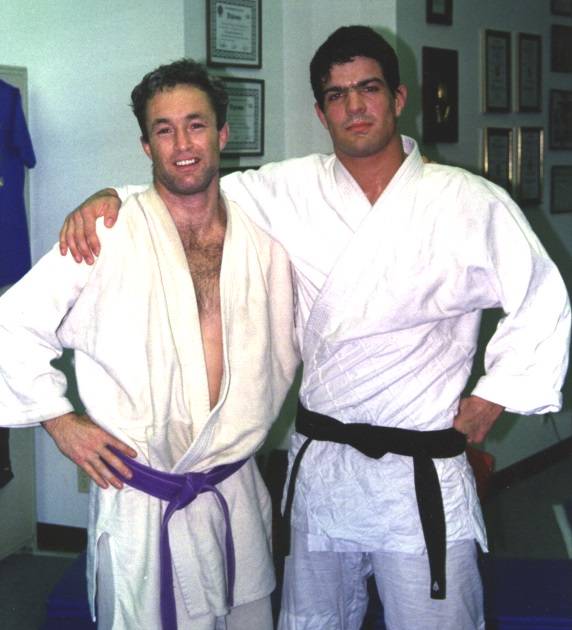
ARTEMIS BJJ: You mention that you didn’t want the belt. There seems to be this split when people get promoted, into two groups. The first is very humble, saying they don’t want it, they’re not ready, they’d rather stay a white belt their entire time in jiu jitsu. The second, which I see on the internet all the time, are excited about their achievement and will shout it to everyone, “Hooray, I got my blue belt!”
What’s your perspective on that?
JOHN WILL: Who am I to say anything? People can think what they like, but all I can say is what I felt, and I never felt adequate. There was always more, I always felt I just needed a bit more training, to be a bit fitter, a bit better. I need to be a bit better husband, I need to be a better whatever. I think anybody striving towards excellence in anything is like that. They’re a little bit dissatisfied with the level that they’ve reached, so they’re always trying to raise the bar, whereas other people are happy to be right where they are, and I also think there is a large part of the martial arts community trying to lower the bar.
So, I think it’s like a bell curve. Some people at one extreme are trying to raise the bar, they’re really working at that, and other people are very much the other way, giving out black belts, not even BJJ but other schools. Everyone else falls somewhere in the middle. Certainly when I was starting out, I never felt that I was good enough.
Also, I was hanging out with an unusual crowd. My BJJ friends were Renzo, Rilion, Ralph: they were all in my class. My classmate Cesar Gracie and I came up together through the ranks. I was not with a bunch of people who just walked off the street. I thought all brown belts were like Renzo, all purple belts are like Cesar, all black belts are like Jean Jacques and Rigan. Of course, that’s not the case, but straight away, I was calibrated to that. Naturally I therefore thought, “Jeez, I’m a crappy purple belt.” [laughs]
ARTEMIS BJJ: Has that impacted on your own standards of promotion?
JOHN WILL: It probably has, I would say so. A little bit. But I’m ok with that and I’m certainly not in judgement of anyone else. There’s something to be said for it being easier than it was back then. I think it is way better that we keep people, because they feel they’re making progress, as they can see their new belts. It is way better that you keep then, rather than it is so hard that you lose them and now they’re not training.
It’s a balance. At the end of the day, we want certain outcomes, we want people to keep training. If that means it is a little bit easier to get a blue belt nowadays, then I’m totally fine with that.
ARTEMIS BJJ: That kind of ties into the next question. Perhaps the most striking story I read in Passion & Purpose was the anecdote about David Meyer.
He was a Danzan Ryu Jiu Jitsu third degree black belt, but shortly after starting BJJ and getting dominated by your purple belt self, he announced to his class that he could no longer in good conscience wear his black belt and teach them. Instead, he was going to shut down the school and strap on a white belt.
That kind of humility is very rare, due to the prestige of a black belt. With the increasingly widespread growth of BJJ, are people like Meyer becoming more or less common?
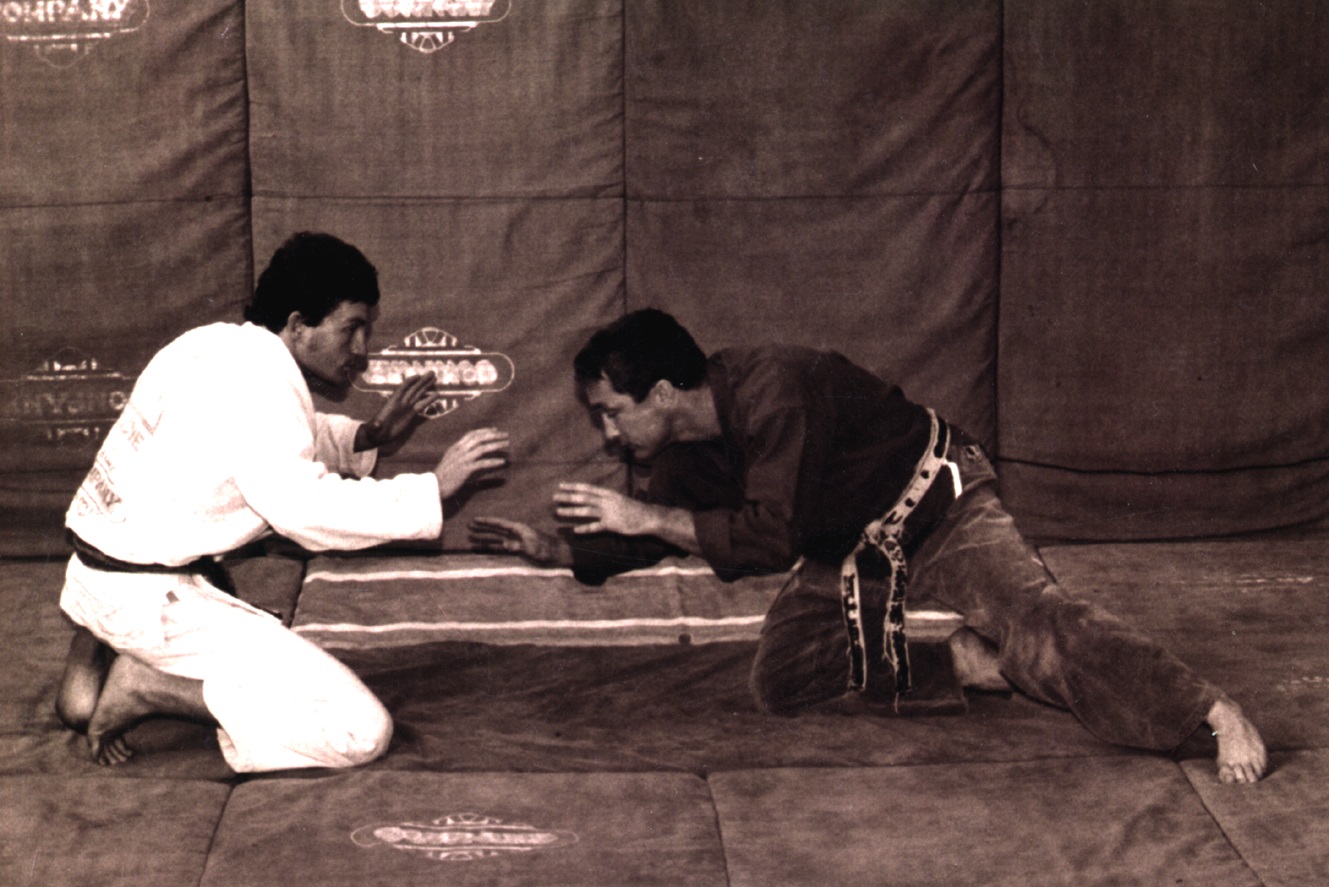
JOHN WILL: It’s a good question, an interesting question. Certainly at the time, it was startling to me that he did that. It showed me the heart of the guy, right away, in an instant. He is one of the most moral, ethical people that I’ve ever met: he’s had a profound influence on me. I’m a much better person for having known David Meyer. I think that’s a great way to choose your friends. If you’re better off having known them, they’re good people. So, we became fast friends because of that.
Maybe you’re right. Maybe it is easier nowadays. Maybe today, people are a little bit less wedded to the rank and therefore it might be easier for them to do what Meyer did back then. But when he did it, it was climbing Mount Everest for the first time. Nowadays, lots of people do it, and they aren’t even mountain climbers. Probably nowadays it is a little easier, because there’s so much literal proof all around us that a BJJ black belt is a very worthy goal, it is easier for people to start. I’m sure of it, actually, as thousands of martial artists have done exactly that.
Now, maybe they haven’t closed their schools down, but in fairness David only had twenty or thirty students. It wasn’t like he was closing his business down, that would have been pretty incredible. He was closing his hobby down. I don’t want to take away from him, because it was still a wonderful thing. He was trying to encourage them, though interestingly enough, only one or two of them came over, but after six months none of them were there. Except for Dick Treanor, he came over and he’s still pottering around.
Photos courtesy of John Will. ‘Like’ the Artemis BJJ Facebook group to be notified about part three. For more interviews, go here
Update October 2014: Richard Norton contacted the site to add his recollections of how Chuck Norris first encountered BJJ. He also pointed to a recent interview with Norris himself, which can be read in the first issue of The Complete Martial Artist. Norris discusses first meeting the Gracies in 1986, along with how Norton introduced him to the Machado brothers. Here are Norton’s thoughts:
RICHARD NORTON: My own introduction to the Machado brothers and BJJ was when Chuck came back from Brazil and brought with him a video of an early Vale Tudo match that Rickson Gracie had with this other fighter, Zulu.
I remember Chuck showing me the tape and both of us thinking how interesting this grappling and striking no rules submission fighting was. Remember, this was years before the UFC ever came into being. John Will and I were sitting in my lounge after a workout and watching this tape with Rickson that I had brought back to Australia. We were fascinated by this (at least for us) new form of submission fighting.
Soon after, I travelled back to California and managed to locate Rorion Gracie, Helio’s son and the original UFC founder, who as it turned out was living in a house not far from where I lived in the US. I immediately started doing private lessons with the legendary Rickson Gracie and Royce Gracie in a garage at Rorion’s house in Redondo Beach.
I trained doing privates with Rickson for at least eight months before meeting Renzo Gracie. He then introduced me to the Machado brothers, who had also recently moved to California to set up shop. I remember after I started training with the Machados that I said to Chuck, “You have got to meet these guys, they are unbelievable”.
So of course Chuck said, “Let’s bring them to the house and do a couple of hours of private lessons with them.”
I remember laughing and saying, “I think half an hour will be plenty!” As it turned out, it was absolutely plenty, because wrestling with these guys for half an hour was like doing a four-hour work out with anybody else. They were that good.
Anyway, Chuck and I eventually helped set up the five Machado brothers at their very first school in Los Angeles. One more thing that I feel I must add. which to me again illustrated the type of attitude that helped make Chuck the champion he was, is that when we first started BJJ classes with the Machados in their new academy, the very first person on the mat, with a white belt on, was Chuck Norris.
How much better an example is there than to see a world karate champion and a black belt in judo on the mat as a white belt, with no ego and just simply being content with being a student? He was more than willing to do whatever it took to learn and add to his knowledge base. The rest is history: Chuck and I are still devout students and dear friends of the Machados to this day.
Presently I am honoured to hold a 4th degree black belt under Jean Jacques Machado and to have the privilege of being the first ever 4th degree black belt in BJJ in Australia.
